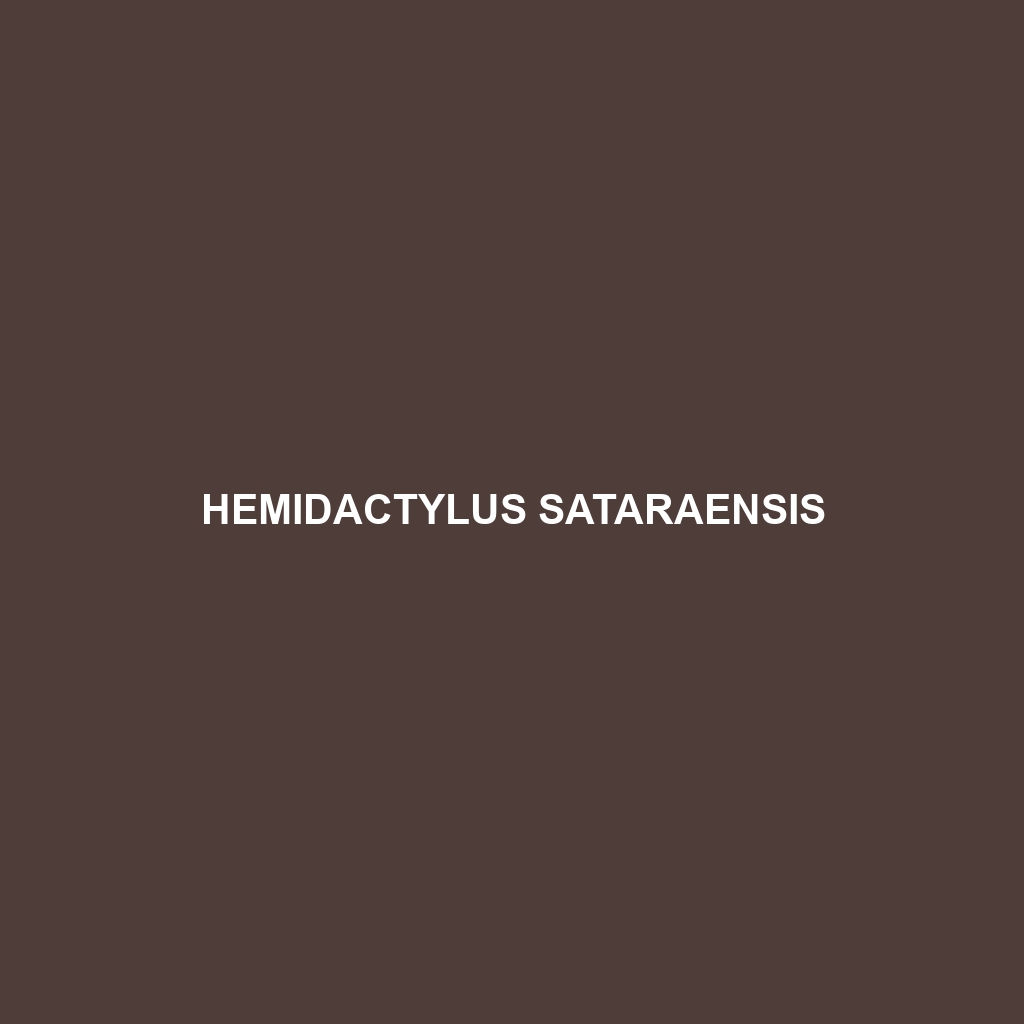<p><b>Hemidactylus sataraensis</b>, known as the Satara House Gecko, is a nocturnal insectivorous species native to the humid Western Ghats of India, typically measuring 7 to 10 centimeters in length with distinctive grey to light brown coloration and dark spots. They thrive in various habitats, are adept climbers, and play a crucial role in regulating insect populations while serving as prey for larger predators.</p>
Tag: Western Ghats gecko
Hemidactylus chikhaldaraensis
Hemidactylus chikhaldaraensis, a moderately-sized gecko native to the tropical rainforests of India's Western Ghats, features a robust body with distinct color patterns and large bulging eyes, enabling excellent night vision. This insectivorous species plays a crucial role in controlling insect populations and exhibits intriguing behaviors, including vocal communication and tail regeneration.
Dravidogecko meghamalaiensis
Discover the Dravidogecko meghamalaiensis, a unique nocturnal gecko native to the Western Ghats of India, featuring intricate brown and cream patterns, large eyes for enhanced night vision, and specialized toe pads for climbing. This vulnerable species plays a vital role in its ecosystem as an insectivore, helping maintain the delicate balance of its rainforest habitat.
Dravidogecko janakiae
Discover the Dravidogecko janakiae, a vibrant and agile gecko from the humid rainforests of the Western Ghats in India, known for its striking color patterns, nocturnal behavior, and crucial role in maintaining ecosystem balance by controlling insect populations. This vulnerable species thrives in shaded, moisture-rich environments and exhibits unique adaptations such as adhesive toe pads for climbing and the ability to change color slightly in response to temperature and emotions.
Dravidogecko anamallensis
Discover the remarkable Dravidogecko anamallensis, a vibrant gecko native to the lush rainforests of the Western Ghats in India, known for its striking coloration, large expressive eyes, and exceptional climbing abilities. This nocturnal insectivore plays a vital role in its ecosystem by helping control insect populations while serving as prey for larger predators.
Dravidogecko beddomei
Discover the Dravidogecko beddomei, a small, vibrant gecko native to the lush Western Ghats of India, known for its striking color changes and nocturnal hunting behaviors. This insectivorous species plays a crucial role in maintaining ecological balance while facing vulnerabilities due to habitat loss.
Cyrtodactylus deccanensis
Discover the Cyrtodactylus deccanensis, a vibrant gecko native to the Western Ghats of India, known for its remarkable camouflage, nocturnal behavior, and role in controlling insect populations. With a robust body and the ability to regenerate its tail, this species thrives in humid tropical and subtropical forests, making it a vital player in its ecosystem.
Cyrtodactylus collegalensis
Discover the Cyrtodactylus collegalensis, or Collegal Gecko, a medium-sized, nocturnal species native to the Western Ghats of South India, thriving in moist deciduous forests. Known for its distinctive dark bands and robust build, this Vulnerable gecko plays a vital role in its ecosystem by controlling insect populations while adapting to various microhabitats.
Cnemaspis valparaiensis
Cnemaspis valparaiensis – Species Description Common Name: Cnemaspis valparaiensis Scientific Name: Cnemaspis valparaiensis Habitat: Cnemaspis valparaiensis is primarily found in the Western Ghats of India, particularly in the Valparai region of Tamil Nadu. This species thrives in montane rainforests, often inhabiting rocky slopes and crevices. The humid, tropical environment supports a rich biodiversity, fostering a […]
Cnemaspis kalakadensis
Discover the Cnemaspis kalakadensis, a stunning nocturnal gecko native to the rocky terrains of the Western Ghats in India, known for its distinctive brown and yellow coloration, agile movements, and vital ecological role in managing insect populations. This vulnerable species reproduces through oviparous methods, laying eggs during the rainy season, and faces threats from habitat loss, making conservation efforts crucial.








